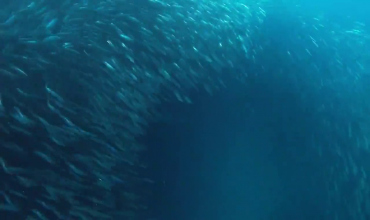-
or
Предыдущая строка субтитров
-
or
Следующая строка субтитров
-
or
Увеличить размер субтитров
-
or
Уменьшить размер субтитров
-
or
Перевести выделенный текст в субтитрах
Краткое содержание
Intelligence, warm blood and strong family bonds have made mammals the most successful group of animals on the planet: they can even survive the Antarctic winter. Here, a Weddell seal leads her pup on its first swim beneath the ice. In East Africa, a rufous sengi uses a mental map of the pathways it has cleared to outwit a chasing lizard. A young aye-aye takes four years to learn how to find and extract beetle grubs, food no other mammal can reach. Reindeer move through the Arctic tundra, making the longest overland migration of any animal. Other mammals have evolved different ways of travelling long distances: ten million fruit bats congregate at Zambia's Kasanka swamps to gorge on fruiting trees. Mammals employ different strategies to find food. At night on the African savannah, hyenas force lions off a kill through sheer weight of numbers, whilst in the Arctic, dozens of polar bears take advantage of a bowhead whale carcass. Raising young is another important factor in mammals' success. Coatis and meerkats form social groups to share the burden of childcare. A first-time African elephant mother needs the experience of the herd's matriarch to get her young calf out of trouble. The largest animals in the ocean are also mammals. The seas around Tonga are both a nursery and mating ground for humpback whales. A female leads her potential suitors on a chase, the males battling for dominance behind her. Life on Location follows the never-before filmed humpback heat run.

